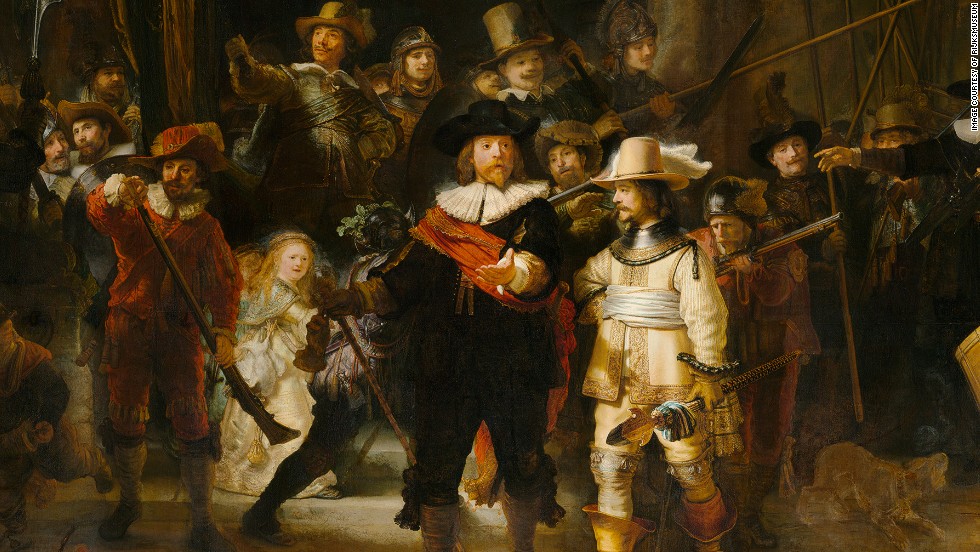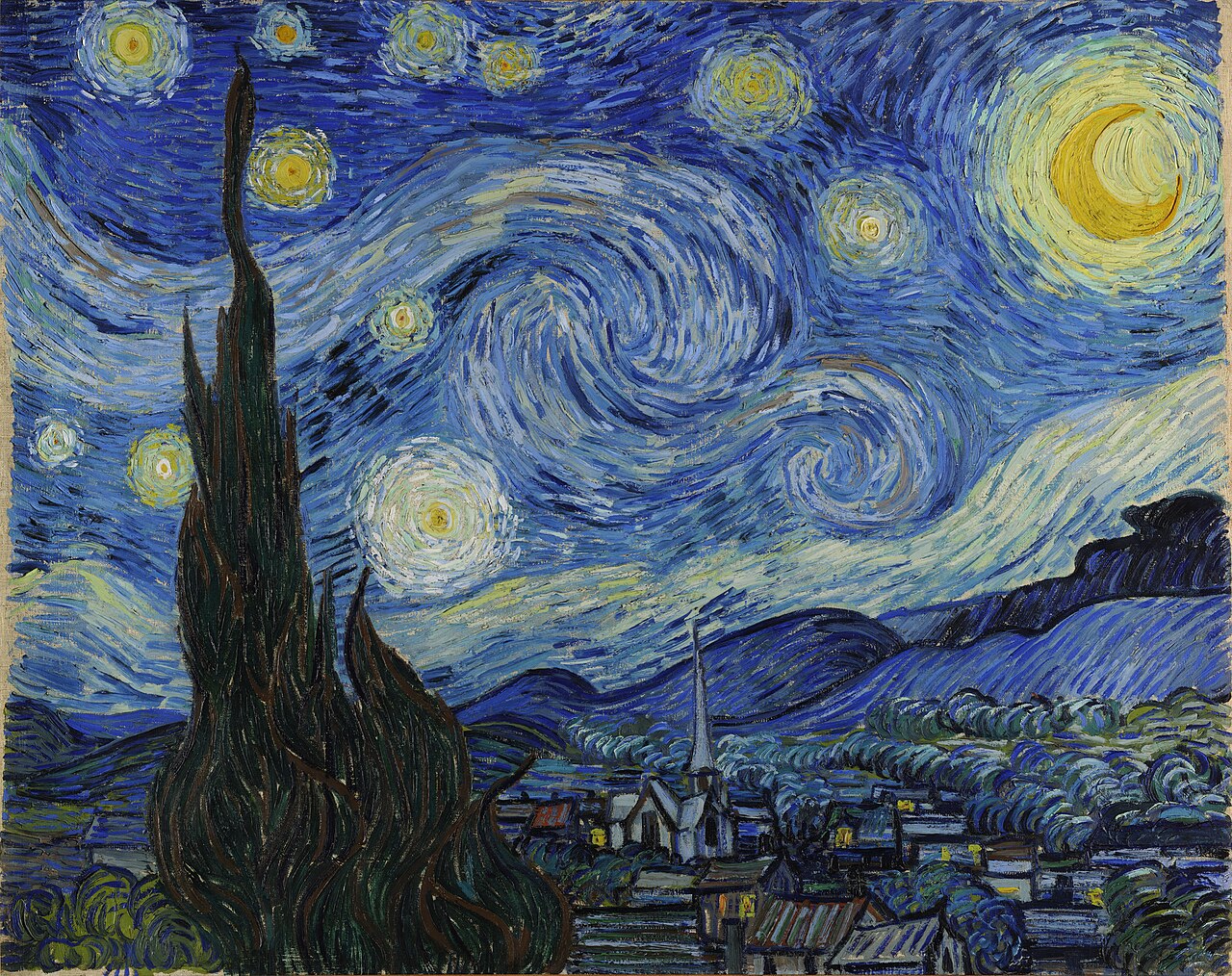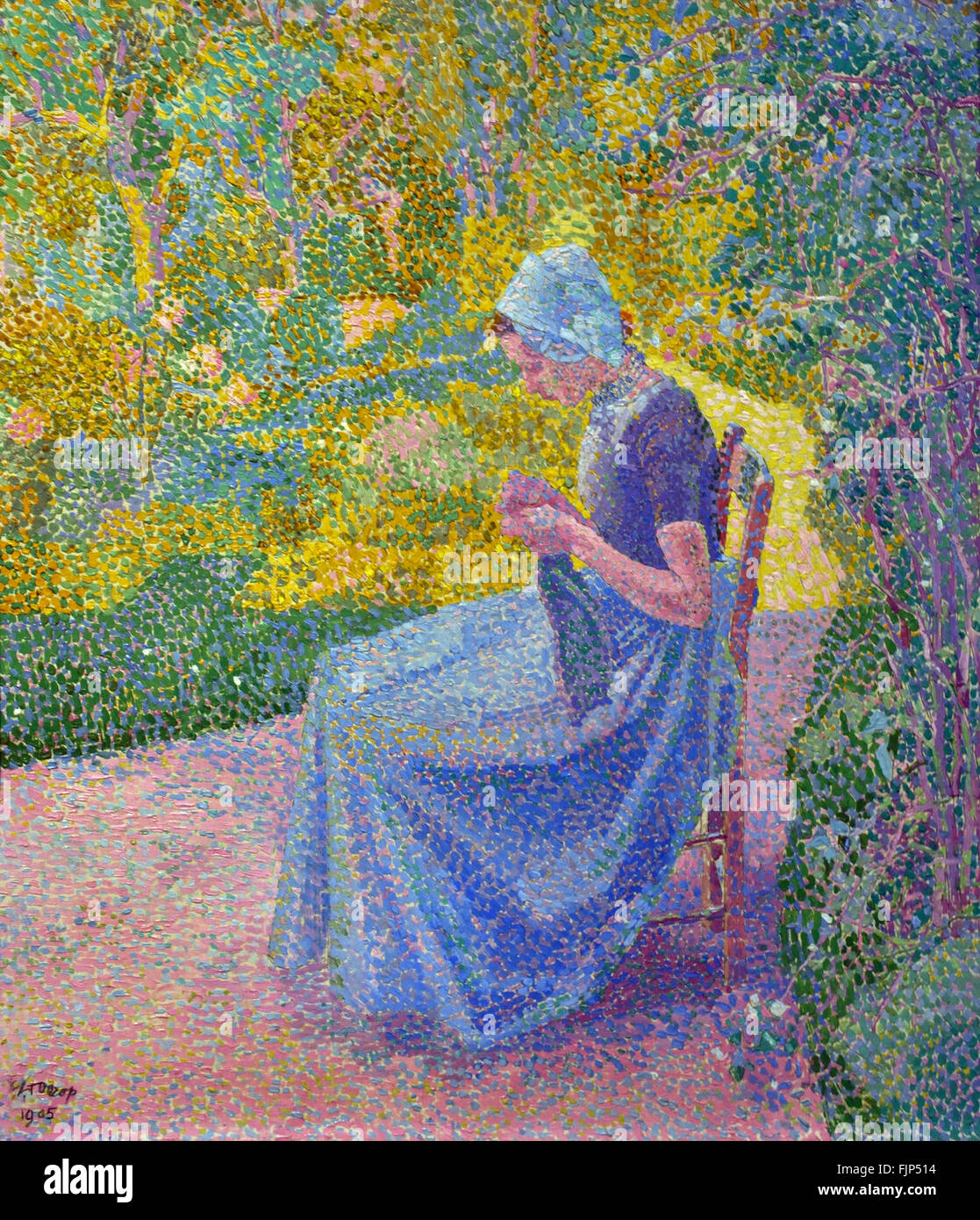When it comes to Dutch
art, one form dominates them all: painting. A few Dutch painters have become such
familiar names that some of their art is now worth millions.
 |
| Vermeer, "The Milkmaid" |
Dutch art pretty
much started with the Dutch Golden Age. In the 1620s, the Dutch painters grew
out of the Baroque period. The Flemish/Dutch painter Rubens brought forth the
realistic style of the Baroque.
 |
| Frans Hals, "Willem Heythuijsen" |
One of the key
characteristics of paintings from the Dutch Golden Age is that artists tended
to evoke intimacy and emotion from the viewer. If you were going to make it as
a painter during this time and you had a good amount of talent, it was
behooving to hook up with wealthy families who commissioned portraits. Portrait
painting was the thing and many of them paid well.
 |
| Rembrandt, "The Night Watch" |
Starting out as a
portrait painter, Rembrandt was one of the more famous painters to work during
this period. His realistic-style paintings often depicted the suffering in his
own life. His most famous painting is probably “The Night Watch.”
Johannes Vermeer is
well known for his work with light and shadows. (Perhaps lessons inspired by
the chiaroscuro styles of Italy?) He is most famous for his painting “Girl with
the Pearl Window.”
 |
| Van Gogh, "Starry Night" |
During the 19th
century, the Hague School brought Dutch painting to the forefront of the art
world at that time. Impressionism also made its way into Amsterdam art studios.
Vincent van Gogh, one of the world’s most well-known artists, represented the
post-Impressionist period. His unique use of impressionist brush strokes with
bright colors and defined edges creates a very eye-catching scene. Today, many
of the paintings of Vincent van Gogh have sold between $50-100 million.
 |
| example of pointillism by painter Jan Toorop |
In the first decade
of the 20th century, Dutch painters saw a rise of pointillism style
of painting, and not long after, other art movements like cubism and
expressionism that were on the rise other places in Europe became popular among
Dutch artists as well. As the 20th century rolled on, artists
excelled at other mediums: sculpture, design, and public art.
Dutch-language
literature actually encompasses the literature from a number of countries,
namely Netherlands, Belgium, Netherlands Antilles (Caribbean Netherlands), and
Suriname as well as countries where the Dutch have spent a considerable time,
such as Indonesia (or Dutch East Indies as it was called then), South Africa,
and French Flanders. The Dutch spoken in South Africa and Namibia actually
developed into its own language called Afrikaans, which is a mix of 17th
century Dutch with local African languages.
Early on, about the
11—13th centuries, the earliest form of literature was
poetry. Most of this was about heroic stories of noblemen. Anna Bijns was an
important Belgian poet who carried an important message in Dutch-speaking
countries: she was quite the 15th century feminist. Translations of
the Bible into Dutch were among first books to be printed. After the
Netherlands gained its independence, literary topics started to expand.
Suddenly, works on government, history, philosophy, religion, culture, and
humanities began to emerge. Drama written in Dutch became a thing during the 18thcentury.
As the Netherlands
saw a period of political changes and social upheaval, poetry once again rose
to the forefront of literature. Probably the most famous writer during this
time was Willem Bilderdijk, an intellectual poet. Later on, many poets writing
in the style of romantic nationalism introduced works that touched on Dutch
culture as well as give a push to Flemish literature. By the late 1800s, a
movement by a few Dutch authors called Tachtigers started to show some homage
to foreign authors, like Percy Bysshe Shelley as well as influence others like
Oscar Wilde. Poetry and drama were
still going strong. WWI and WWII would change things. During WWII, many writers
either moved (if they were fortunate) or went underground. One of the most
popular required reading selections in schools around the world is the Diary of
Anne Frank, a young girl living in Amsterdam who wrote about her life hiding
during the war. She later died in a concentration camp in 1943. Today, there
are many authors who write in every genre.
Up next: music and
dance




Interesting article... Sharing with you an Interview with Vincent van Gogh(imaginary) in http://stenote.blogspot.com/2016/07/an-interview-with-vincent.html
ReplyDelete